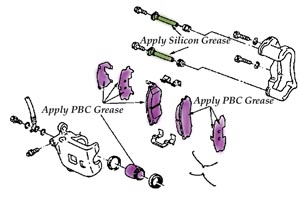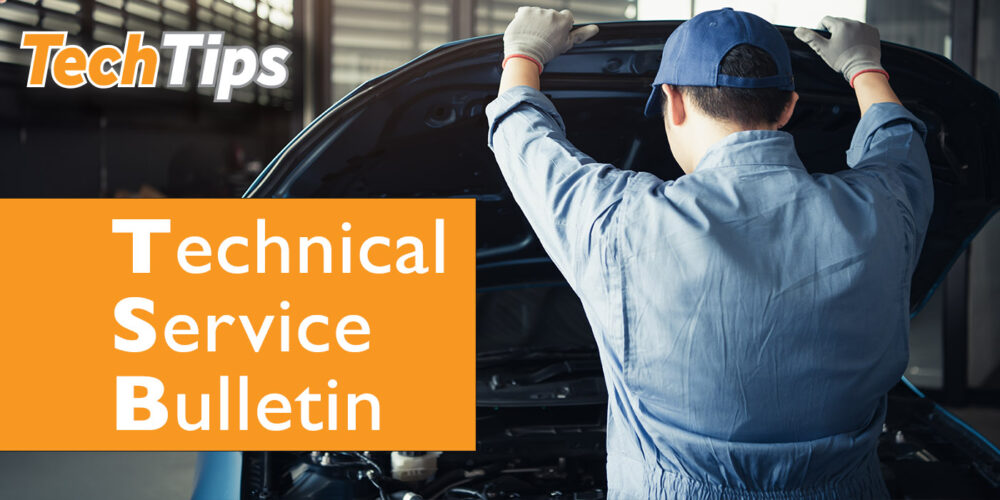By Gary Goms
Import Specialist Contributor
 Although better materials and manufacturing technology have extended the timing belt replacement intervals on many nameplates, timing belt replacements remain one of the most profitable scheduled maintenance services. They continue to be profitable because many other scheduled services like spark plug replacements, filter replacements, coolant changes and transmission fluid changes can be packaged with a timing belt replacement. In addition, many related parts, such as belt tensioner and idler pulleys, water pumps, accessory drive belts and radiator hoses, can be sold along with the timing belt replacement.
Although better materials and manufacturing technology have extended the timing belt replacement intervals on many nameplates, timing belt replacements remain one of the most profitable scheduled maintenance services. They continue to be profitable because many other scheduled services like spark plug replacements, filter replacements, coolant changes and transmission fluid changes can be packaged with a timing belt replacement. In addition, many related parts, such as belt tensioner and idler pulleys, water pumps, accessory drive belts and radiator hoses, can be sold along with the timing belt replacement.
Because many import owners now understand that major engine damage may occur if timing belt replacement is postponed or neglected, timing belt replacements and related services are easier to sell. Most belt replacements have become a “do-it-for-me” service because the tooling and skill requirements are well beyond those of many amateur mechanics.
REPLACEMENT INTERVALS
Although the traditional recommended timing belt replacement interval has been 60,000 miles for many years, the use of modern materials and technology has extended timing belt replacement intervals on many nameplates well past the 100,000-mile mark. Some import manufacturers now recommend inspecting timing belts at specific intervals, in contrast to those recommending scheduled belt replacements. In these cases, the recommendation is to inspect the belt for correct tension, cracking, fraying, and oil or coolant contamination.
Oil contamination, in particular, will soften the rubber and cause the timing belt to fail prematurely. In most of these inspection-based applications, it’s best to rely on replacement intervals recommended by aftermarket suppliers and manufacturers. Of course, no matter what the mileage, a fresh timing belt is always recommended when replacing a cylinder head or complete engine.
CATASTROPHIC BELT FAILURES
Unfortunately, not all import owners are aware of the need to replace the timing belt. The most predictable result of neglect or procrastination is a cranking, no-start complaint. If the application has an interference engine in which the valves contact the pistons during a timing belt failure, it’s highly likely that the valves are bent and the cylinder head must be removed for repairs or replacement. Although some instances have been reported in which an interference engine didn’t suffer valve damage when the timing belt failed, these cases are the exception rather than the rule.
Of course, let’s not forget that even a non-interference engine can occasionally bend valves if the piston domes have excessive carbon buildup and manufacturing tolerances are “stacked” to reduce the clearance between the valves and pistons.
If the engine has broken or stripped the timing belt, it’s important to check the engine oil level before proceeding with the repair. In many cases, insufficient lubrication may have caused the camshaft to seize in the camshaft journals. Similarly, a lack of coolant can cause overheating that warps the cylinder head and seizes the camshaft in the cylinder head journals.
When inspecting a catastrophic timing belt failure, remember that some engine applications may also shear the camshaft sprocket locating key if the cam seizes due to insufficient oil or coolant. This condition will cause the camshaft to run out of time even when the belt itself is correctly installed. Whenever a timing belt is stripped or broken, it’s always best to test the engine’s cranking compression by installing a new belt before reassembling an engine that has suffered a catastrophic timing belt failure.
DIAGNOSTIC TIPS
In some cases, a timing belt may be one tooth out of time at the cam sprocket because ice or foreign materials became trapped under the timing belt, or because the belt was incorrectly installed in the first place. While modern variable camshaft timing featured in many current imports may change the following diagnostic scenario, a camshaft sprocket operating one tooth in the retarded position on conventional applications usually causes low intake manifold vacuum and very sluggish engine performance. On the other hand, if the camshaft is advanced one cam sprocket tooth, the engine will usually idle at higher-than-usual intake manifold vacuum and will lack high-speed performance.
If the engine is an OBD II-era, SOHC V-block configuration, one camshaft running out of time may cause misfire trouble codes on that cylinder bank. In other cases, a camshaft running out of time on one cylinder bank may cause a noticeable difference in cranking compression between both cylinder banks.
Last, a timing belt adjusted with excessive tension will usually exhibit a cycling, low-speed, whining noise at idle speeds. Some engine designs operating with loose timing belts will often exhibit a deep knocking sound that resembles a crankshaft bearing knock or bad piston slap.
INSTALLATION TIPS
Fortunately for many import technicians, a number of aftermarket sources supply timing belt replacement manuals that provide recommended replacement intervals, tool requirements, step-by-step procedures, installation tips, illustrations and torque specifications for specific import applications. It’s vital for any technician to review these detailed installation procedures for specific applications before proceeding with a timing belt replacement on an unfamiliar vehicle.
For example, many engines, such as Honda, require a special tool designed to hold the harmonic balancer in place while the retaining bolt is being removed or torqued in place. Engines equipped with dual overhead camshafts may also require one of the brand-specific or universal aftermarket tools to lock the camshafts in place.
In addition, while most applications align the timing marks on the cam sprockets with alignment marks on the cylinder head, engine block or rear timing cover, some applications may align the timing marks on the sprockets with timing marks printed on the belt itself. In these cases, the belt is directional and must be installed with the printed arrow pointing in the direction of engine rotation. In other cases, a timing mark separate from the traditional TDC timing mark on the crankshaft sprocket may be used to time the belt.
To maintain a reference point for routine belt replacements, many veteran technicians mark the alignment of the pulleys with a crayon or Wite-out typewriter correction fluid before removing the old timing belt. Many current engines also require specific belt tensioning procedures to prevent premature wear of the belt and accessory pulleys.
At this point, it’s especially important to inspect the oil seals and water pump for leakage. Because a future failure of either item will require the removal of the new timing belt, many shops recommend seal and water pump replacements as a standard operating procedure for belt replacements.
Many aftermarket suppliers offer timing belt installation kits that include the belt and related tensioner and idler pulleys, often at a significant savings over purchasing these items individually. In addition, don’t forget to order the balance shaft timing belts used on many engines. All too often, an old balance shaft belt will break and cause the camshaft timing belt to fail. Also, don’t forget to check belt tensioners for correct pressure and travel. If in doubt, replace the tensioner because its role is vital to the life of the belt replacement.
To prevent damage to the new belt, it’s important to never pry, twist or force the belt into place. Before installing the timing covers, center the belt on the sprockets and remove excess slack from the belt as it feeds into the crankshaft sprocket by turning the engine over by hand several revolutions. Then hold tension on the sprockets in the direction of crankshaft rotation before torquing the tensioner pulley in place.
After the new belt is installed, ignition timing should be checked using specified procedures if the engine is equipped with a distributor. In most cases, the distributor timing shouldn’t need to be changed. If significant ignition timing adjustments are required, the new belt installation should be reinspected for timing errors.













